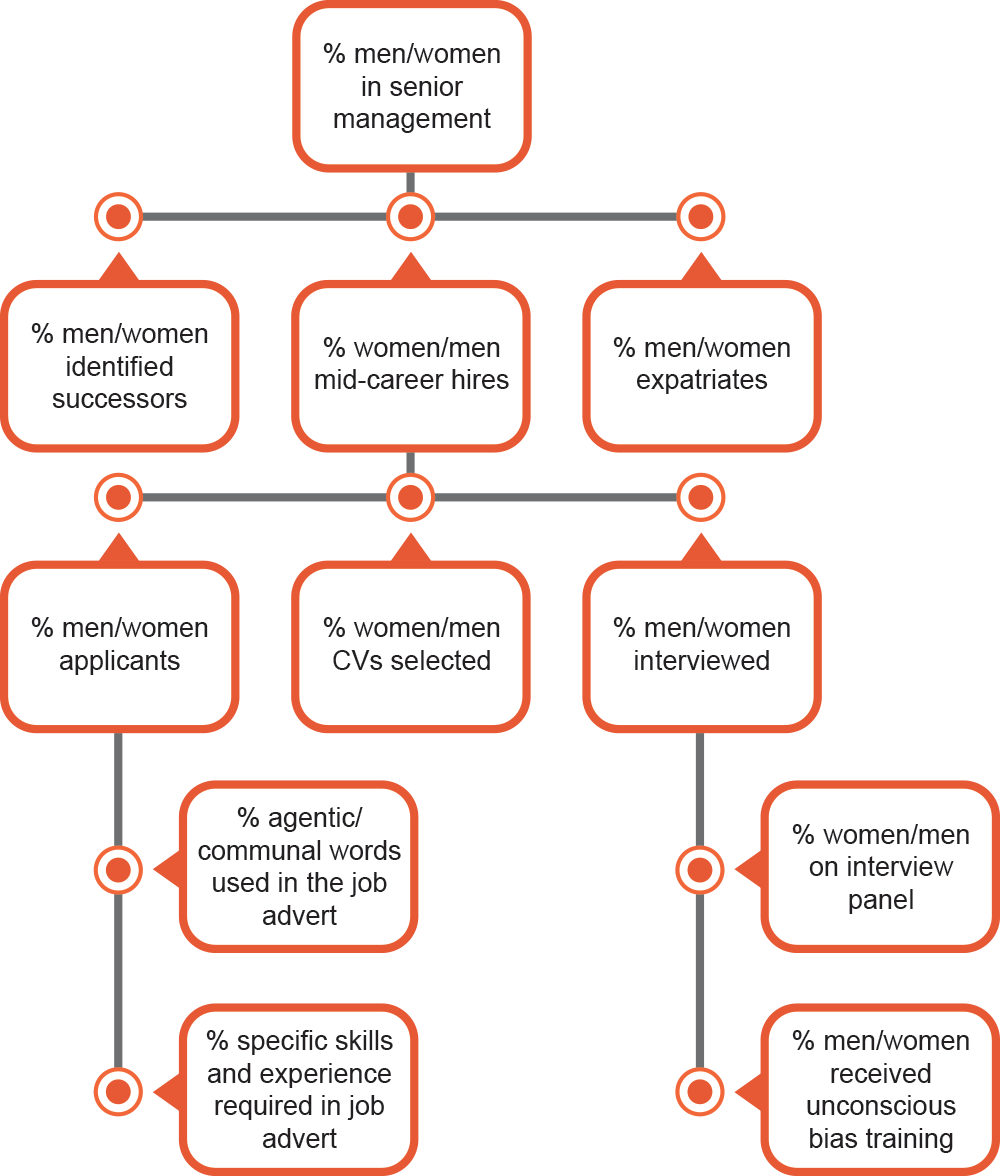
Over the past decade, a number of Governments have introduced quotas to step change the gender balance of women on boards. This approach is highly divisive, some women feel affronted that they have been appointed solely to a position because of their gender, the so called “golden skirts” and some men now believe that they are discriminated against, because they are a man.
Many organisations are using targets to track progress of their Diversity journey, using the approach "you get what you inspect, not what you expect".
What are Leading and Lagging Key Performance Indicators (KPIs)
Simply put, KPIs provides a focus for strategic and operational improvement, create an analytical basis for decision making and help focus attention on what matters most.
For example, just as your weight (kg) is a lagging KPI, as it is the outcome of a number of input KPIs e.g. calories consumed, minutes of daily exercise. To change a KPI, e.g. Gender Balance of management, this is an outcome of a number of potential actions which can be measured e.g. Recruitment or Promotion into management. The Gender Balance of management is the ultimate KPI to be tracked (Lagging) and is impacted by a number of actions, which occur historically (Leading).
This relationship between the output (lagging) and input (leading) KPIs can be utilized to improve the diversity of your organization, by focusing on specific "pinch points" to move the needle where change is required the most.
Increasing Gender Balance in Management
It is tempting to focus solely on lagging KPIs e.g. a public commitment to the representation of men and women in senior leadership roles, however for this to change, there needs to be a deep understanding of all the input/leading KPIs, which produce this result.
The chart below illustrates some leading KPIs to measure, where the goal is to increase the gender balance of senior management. In this example, indicators which could affect the hiring decision include: the gender balance of identified successors, gender balance of mid-career hires (boosting the talent pipeline) and the gender balance of expatriates (where international experience is a key factor for senior leadership roles).
To ensure gender balance of mid-career hires, it is key to dive deeper into the process, in this case focusing on the gender balance of the recruitment funnel, including: applicants, CVs selected and interviewees.
A gender balanced candidate pipeline does not tend to happen by accident, and so additional KPIs need to be tracked to identify where any unconscious bias in in place. Examples could be assessing the language of the job advert (agentic vs communal wording for example, competitive vs team working or driven vs dedicated. Research has shown that job adverts contain twice as many agentic as communal words or minimizing the list of experiences required for the role. (Research has demonstrated that men will apply for a job when they meet 60% of the required criteria, whereas women strive to meet 100% of the criteria).

To step change Inclusion & Diversity KPIs, define the leading and lagging indicators for your organization, and identify the one or two input factors which will have the highest positive impact on your lagging KPI.
Accountability and Action
Be clear and communicate on who has responsibility for these KPIs and how progress is tracked. E.g. for the list of experience/requirements for a job role, if this is agreed to be a maximum of 5 criteria, this responsibility sits with the line manager and recruitment partner, and could be tracked by the HR Lead on a quarterly basis as part of the standard operations review meeting.
If the leading indicator turns green (improves to the desired level) and the lagging indicator stubbornly remains red, then test other leading KPIs to improve the lagging indicator.
Summary
- Becoming an Inclusive and Diverse organisation takes focus, commitment, effort and many other factors to fuel the journey.
- Identifying the key Leading and Lagging KPIs can accelerate progress and change.
- KPIs provides a focus for strategic and operational improvement, create an analytical basis for decision making and help focus attention on what matters most.








